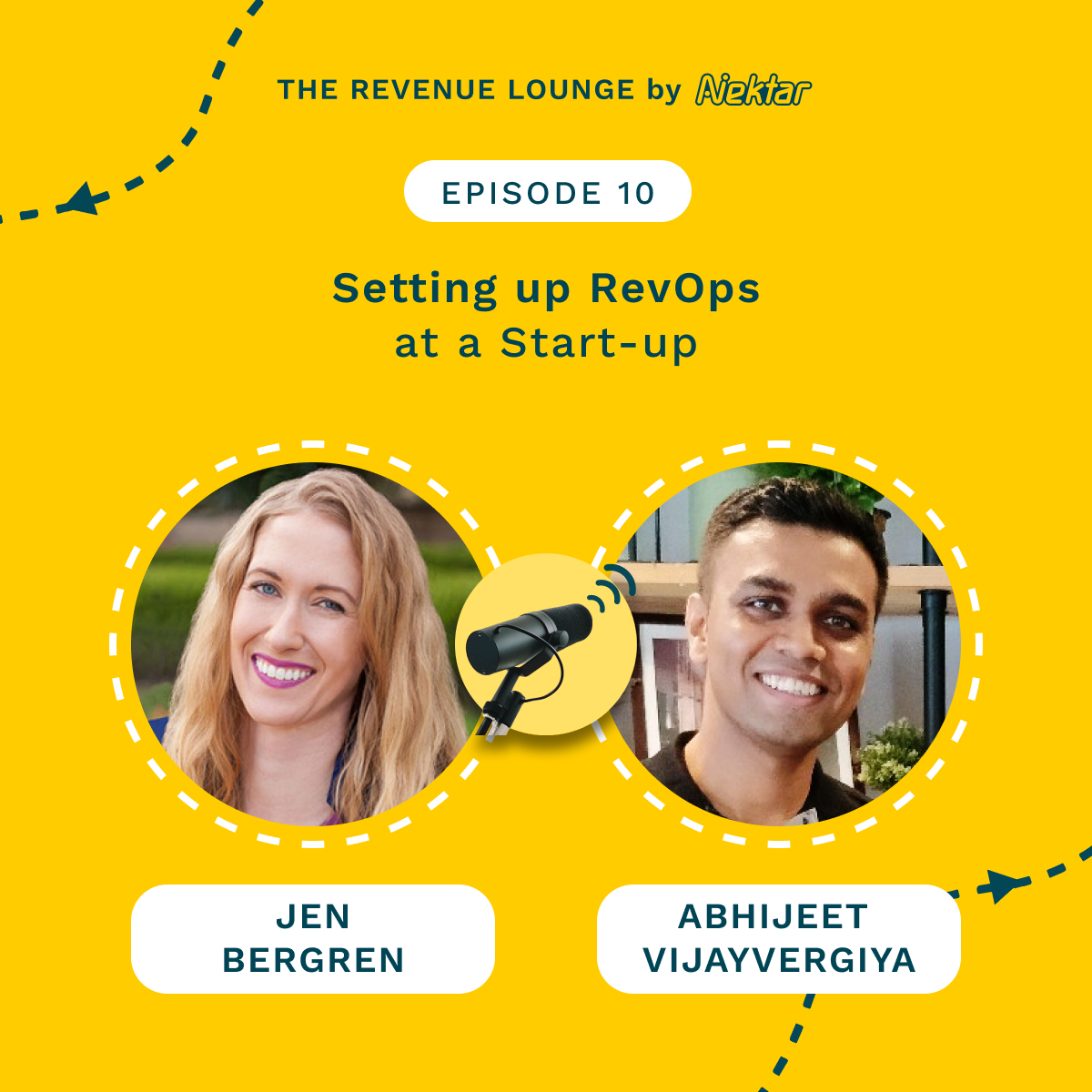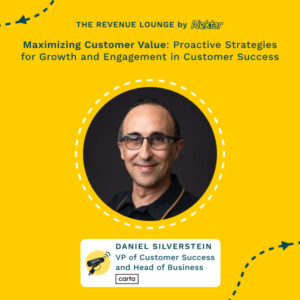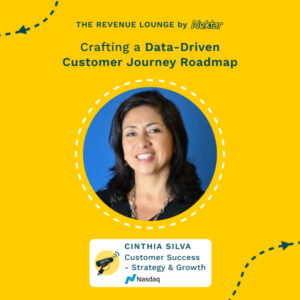Improving Sales Forecasting with RevOps
March 27, 2024
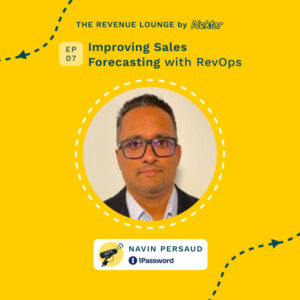
About
The Revenue Lounge
The podcast covers stories from leaders across RevOps, Sales, Customer Success, GTM, Data and Marketing about what drives these functions and what advice they would share with our listeners. With 3 seasons recorded, the podcast currently features 50+ enterprise leaders in the B2B SaaS domain. Tune in to hear from the best in the business
In this episode of the Revenue Lounge podcast, host Randy Likas interviews Navin Persaud, the Vice President of Revenue Operations at 1Password. They discuss best practices for improving sales forecasting from the perspective of a revenue operations leader.
Key Discussion Points:
– The role of curiosity and empathy in being an effective revenue operations leader (00:03:19)
– The foundational elements needed before you can trust forecast data (00:05:45)
– How to get stakeholder alignment on processes and metrics (00:06:43)
– The importance of data stewardship in ensuring reliable forecasting data (00:08:37)
– Leveraging historical sales data to uncover trends and patterns (00:14:18)
– Best practices other companies use to significantly improve forecast accuracy (00:18:14)
Guest Bios:
Randy Lykes (Host) – The host of the Revenue Lounge podcast. An expert in revenue operations and sales effectiveness.
Navin Prasad (Guest) – The Vice President of Revenue Operations at 1Password, a leading password management solution. Navin has over 20 years of experience in sales, marketing and operations. He’s an expert in leveraging data, technology and best practices to optimize revenue growth.
Key Quotes:
“Curiosity is a superpower. I need people to understand and want to understand why is it the way it is, not just accept it at its face and move on.” (00:03:19)
“I needed agreed upon process, a sales process. I needed metrics that were reliable…I needed CPQ in place…I needed the buy in.” (00:05:45) on what’s needed to trust forecast data

[00:00:07] Randy Likas: Forecasting plays a pivotal role in strategic decision making. Accurate sales forecasting can be the key to unlocking growth, optimizing resourcing resources, and ensuring your business thrives in an ever evolving marketplace. And that’s precisely what we’re here to explore today the best practices for improving your sales forecasting all from the lens of revenue operations. Hello, everyone. Welcome to the revenue lounge podcast.
[00:00:29] Randy Likas: I am your host, Randy Lykes. And joining me today is Navin Prasad. Navin is the vice president of revenue operations at at one password is over 20 years experience in sales and marketing operations he’s an expert in leveraging data technology, and best practices to optimize revenue performance and growth. Hi, David. Thank you for joining us today.
00:00:49 Discussing Systems, Processes, and Analytics in Supporting a Go-to-Market Organization
[00:00:49] Navin Persaud: Hey, Randy. Thanks for having me.
[00:00:52] Randy Likas: So let’s start a little bit talking about, you know, a little bit about your role at at 1 Password. What what what have you been up to, and and kinda what’s the scope of of, the things that you work on?
[00:01:01] Navin Persaud: Sure. I think I’d like to think I manage a team that nimbly supports, almost a 300 person go to market org. We manage specifically 3 areas, the systems that support the go to market org, the process that defines, like, how our functions work and how we then can extrapolate that into reporting and then sort of the analytics of, like, what’s actually happening. So the simplest analogy is if you think of this in sports, I love sports. I love football and hockey, etcetera.
[00:01:34] Navin Persaud: We build the field of play. We referee what happens, and we provide commentary on the play by play.
00:01:42 Exploring Navin Persaud’s Journey into Rev Ops
[00:01:42] Randy Likas: So I I like that. I I I’m a sports fan as well and and, you know, I like that analogy. Talk to me a little bit about, you know, I I looked at your background and, you know, going back to your your IBM and and, and Lenovo days, like, you’ve got a really interesting background. You’ve got some presales and some channel and some project management. How did you get into rev rev ops?
[00:02:00] Randy Likas: Like, what what’s your story?
[00:02:02] Navin Persaud: I think it was an aversion to being a seller. Sales sales hard, but it was a useful, background for me because it it it allows me to have empathy for what the sales process is and how hard that struggle is when building out tools and processes and trying to referee, like, what’s right and balancing that with what’s good for the company. I think a lot of rev ops leaders who don’t have a sales background sort of make decisions in a vacuum for the good or bad and not take into the the account that selling is hard. It’s not easy. It’s harder now more than ever.
[00:02:37] Navin Persaud: Buyers are smarter. Budgets are tighter, and you need to weaponize as much of the data that you have in front of you to arm your sellers with, you know, the information they need at the right time or the right moment to be able to capitalize on what it is they’re doing.
[00:02:53] Randy Likas: So when you when you look to build build out your team, is there any certain skill sets that you look for in particular, like, you know, really solid, you know, operations experience or really solid program management experience? Like, what are the typical skill sets that that you look for as you build out your team for somebody in rev ops?
00:03:09 Market Conditions Impact on Forecasting
[00:03:09] Navin Persaud: Yeah. Outside of, like, the fundamental things that we need to support the tooling that we have. Right? The, you know, the either the analytics or the CRM, etcetera. Curiosity for me is a superpower.
[00:03:19] Navin Persaud: I need people to understand and want to understand why is it the way it is, not just accept it at its face and move on. For me, curiosity is one of my superpowers. You know, when I join an organization, first place I’m gonna go is our business development team. It’s a tip of our spear in any company. So I wanna understand what it is they do and how they do it and how I can make it easier.
[00:03:42] Navin Persaud: And then I’ll work my way through the sales journey.
[00:03:45] Randy Likas: So, I’m curious as well by by nature, I. And I’m curious kind of like what you know what’s going on with this market these days right so there’s several different factors going on. Things that have worked in the past you know our work were challenges working to today. We’d love to just get your perception on sort of market conditions right now and and how that’s impacting, you know, forecasting.
[00:04:04] Navin Persaud: Yeah. I I would look at it from myself as a a buyer of software and the things that I’m going through, and then I can sort of flip that around and think, oh, this is what our customers are probably thinking. Am I using the tooling that I have? Is it well adopted? Am I gaining value from it?
[00:04:21] Navin Persaud: Should I renew it? Is it easily integratable? Can I live without it? Like, I ask myself those questions every time I come up for renewal on something, you know, 90 days in advance, and our customers are no different. Right?
[00:04:33] Navin Persaud: Is is what we offer in the market like table sales. Is it a must have or a nice to have? If you’re working for a company that sells nice to have stuff, you’re gonna struggle right right now. But if you’re working for, a company that’s using one password and it’s, you know, it’s must to have. Security doesn’t go away.
[00:04:50] Navin Persaud: Bad actors don’t go away. You know, there’s you’re you’re you’re rooted in their infrastructure, and I think that’s what you really need to to press upon.
00:05:00 Challenges in Delivering Accurate Forecasting
[00:05:00] Randy Likas: When you think about, like, the challenges that of of of really delivering a predictable or accurate forecasting. Right? Because those are 2 different things. 1 is we can we can predict what we’re going to do, but how accurate are we in in terms of doing that? What do you see some of the biggest challenges organizations face right now with with with making sure that they’re they’re both predicting and and both accurate as well.
[00:05:21] Navin Persaud: I think every company aspires to run a clean forecast and some of ops leaders trying to do it really quickly. When I got here, I knew a few things needed to happen before I could trust a forecast. I needed agreed upon process, a sales process. I needed metrics that were reliable. I needed I needed the system to ensure that only certain people could change certain things at certain times.
[00:05:45] Navin Persaud: I needed CPQ in place so that I had an opportunity to understand, renewals versus new sales. Like, you needed that foundational data points in place and operational before I could then go on a forecasting journey so that I could trust the data. So that I know if this happens, I expect to see this. And then I needed the buy in. Right?
[00:06:06] Navin Persaud: I needed sales leaders to actually understand that this is how we’re gonna run the ship. And this is your part in making that ship go. And this is how we’re all gonna come together to measure the business. You don’t have those ingredients. You don’t have the thing you’re trying to make.
00:06:22 Aligning Stakeholders for Effective Forecasting
[00:06:22] Randy Likas: So I love that. And I think you’re you’re spot on with with, you know, the processes and the metrics and and and the buy in, and adherence, but like it’s not not easy to get there, right? So can you talk a little bit about, like, how do you how do you align those stakeholders around around those sort of critical areas, for that that are needed for forecasting?
[00:06:43] Navin Persaud: Sometimes it’s a democracy. Sometimes I need everyone to vote and to weigh in. Sometimes it’s a little bit of this is the way we’re going. This is the way. Right?
[00:06:53] Navin Persaud: And Yep. You’ve gotta find that right mix. And again, I’ll go back to being empathetic of what a sales process works and and looks like, you’ve gotta guide sometimes and you’ve gotta ask for input along the way. If you’re struggling in a in an ops position because you can’t get alignment, it’s because you really don’t have that I don’t know what’s the best way to say this, street cred with respect to your your sales process and how that mission unfolds to really make it happen. And I think I work from the bottom up.
[00:07:25] Navin Persaud: Right? From the sales individuals to the sales leaders. And I’ve had an opportunity throughout my career to, like, earn that street cred. So that I can come in and sales, this is what good looks like. This is what bad looks like.
[00:07:37] Navin Persaud: And here’s where we’re headed.
[00:07:39] Randy Likas: Yep. Very good. We let’s talk about data for for a second because we we don’t really get dig into data. What what where do you get make reliable data as as part of this forecasting process, today?
00:07:52 The importance of data stewards in managing and ensuring the reliability of data
[00:07:52] Navin Persaud: Super important. I mean, data is an input from our sales teams, from our systems, from our functions that live throughout the the sales process starting inbound, working its way through outbound, etcetera. But a certain point, you need custodians or stewards of that data to ensure that it’s gonna look and evolve in the way that you would expect so that it can be reliable and reported on so they can be ingested by systems downstream so that it can empower and inform the business. So there are data stewards. I I I I chape a little bit of data ownership because I think it’s a bit shared across a number of functions, but you can definitely have data stewards.
[00:08:37] Navin Persaud: People whose jobs are to ensure the systems are doing what you expect, that you have process that make sure the data evolves in the way you would expect, and then that output becomes valuable. But unless those precursors are in place, that output is a dog’s breakfast.
00:08:54 Data Stewardship and Alignment in Forecasting Meetings
[00:08:54] Randy Likas: Where do those data stewards typically live? Do they live within the line of business? So marketing, sales, success, or do they live within your organization? And and maybe it’s not in in either or. Maybe they they they live in both places.
[00:09:07] Randy Likas: But typically, you know, where would you say those stewards have them have the most success?
[00:09:11] Navin Persaud: They live in the line of business for for our teams and where I’ve seen the success. Marketing owns a set of data. That’s marketing’s thing. But where we where we intersect, that’s a shared responsibility. Okay.
[00:09:23] Navin Persaud: I own the data within the go to market, but the minute it goes to finance, that’s a shared responsibility between us and finance. And then if our data is ingested in downstream analytics, that’s a shared responsibility. We have to we have to work together. We we neither one of us owns it in in in totality, but we we own it together to ensure that it’s it’s steady, it’s reliable, and it’s, you know, integrated and working.
[00:09:46] Randy Likas: Now if sure we’ve we’ve all been in situations where, you know, we we come to our our joint meetings, our forecasting meetings, and our data doesn’t necessarily look the same. Right? Right and that’s ultimately I think we’re we’re you’re trying to do is make sure that that doesn’t happen but there’s instances where where where it does. What what is the source of of disconnected data typically, that that you’ve seen?
[00:10:05] Navin Persaud: Misalignment of process, would be definitely number 1. I’ve had the opportunity, luxury, or the pain to lead forecast calls in my last 3 or 4 places. So I have a red it’s free regimen. I’ll I’ll outline how it works. I’ll run a call on Monday, and I’ll walk through the data, and we’re all aligned to that or we get aligned to that.
00:10:28 Challenges with rolling up data to managers in businesses
[00:10:28] Navin Persaud: So that part is not difficult for me once I have the the core infrastructure in place. What’s difficult is getting the ICs to roll up the data to the managers so they can come well prepared to talk about their business. I think that’s where the biggest challenges have always lived.
[00:10:44] Randy Likas: Yep. So, you know, I’ve come from a from an organization where, you know, we would talk to, a lot of of leaders around around how they forecast. Right? And it’s amazing to me how many leaders are still using spreadsheets to roll up their numbers. There’s been a lot of changes in, you know, in technology, in in rev ops.
[00:11:04] Randy Likas: So what technology or tools have you seen are best to assist, you know, sort of optimizing that process from the IC level on on up? And not necessarily, you know, we’re not necessarily looking at naming vendors per se, but, like, how much are you seeing, you know, AI as being, you know, important at this? You know, how much is is it all still regardless of the tool? It’s, you know, it’s about making sure our process are process are correct. We’d love to hear just your take on, like, the technology in general without necessarily naming
00:11:32 The Role of AI in CRM Systems
[00:11:32] Navin Persaud: vendors. Yeah. I think your core CRM has to do most of it. Right? You have to have good process in place to ensure that you have the right stage progression, you have the right activity capture, you have the right definitions of how you roll up a forecast.
[00:11:46] Navin Persaud: I think AI is definitely new on the scene and adds a layer of contextualization to what’s happening in your pipeline that probably couldn’t see in the past, and that is really cool. Further, it’s giving the opportunity for real time notification on what’s happening. Instant messaging means have the opportunity to sort of manage their pipeline data in different places, whether it be on their mobile device, on the app, etcetera. So that’s offering a bit more. For me, it’s giving me context on what I’m seeing in pipeline swings and changes and deal progressions, etcetera, that break away my reliance from what I need from the reps and allow me to automate in places that I was hoping the reps would capture.
[00:12:29] Navin Persaud: Why are we winning deals? Why are we losing deals? Where are deals at? I don’t need to bug people anymore. I can now see that real time and understand it and build automation around it to better understand it.
[00:12:42] Navin Persaud: All I need is for the reps to be doing what I what what I would expect them to do, and now I have systems of record that can capture more of this.
00:12:50 Challenges with Data Cleanliness in Sales Organizations
[00:12:50] Randy Likas: What, what would you say is the challenges around, data cleanliness? Right? So I I’ve I’ve been in sales for for 30 years, and, you know, every organization I’ve worked with has always wrestled with a certain degree of, like, the CRM data is actually dirty itself. Like, so we we we do the do the best that we can with the data that we have. But, how how do you look at, like like, making sure that the the the accurate date the data that we are looking at is is clean?
[00:13:17] Navin Persaud: Activity capture is always a problem everywhere that I’ve been. How it’s defined, There’s so many feeder systems going into your CRM, whether it be your sales engagement platform, whether it’s a call recording, etcetera. Like, that’s always a little noisy. So, you know, spending time and focus there for sure. Other areas are just misinterpretation.
[00:13:40] Navin Persaud: Right? Like, you have a large sales team that have come from other sales orgs. They have a certain way of doing things, and you need to align it because every every company I’ve been in, the sales process has been slightly nuanced. And you need to ensure that you have a sales methodology that everyone’s bought into or at the bare minimum understands that when I do this, it’s gonna roll up here and it’s going to mean this. I think those have been the the biggest disconnects that I’ve seen.
[00:14:06] Randy Likas: Okay. How do you feel RevOps facilitates the analysis of historical sales data to identify trends and patterns and that can enhance, you know, future forecasting?
00:14:18 Effective Change Management in Revenue Operations
[00:14:18] Navin Persaud: I think here, we really press on our FP and a teams. I think it’s it’s my job to ensure that we have a strong dataset for which our FP and a teams can actually plan and do some analysis and actually, you know, build a model for the future. I don’t necessarily think, like, you know, we can give you, like, what’s happened in the last year standpoint from a rev ops view, why we’re winning or why we’re losing, but a strong FP and a team who can leverage a dataset to understand here’s what’s been the change, here’s what’s been the average, here’s what your role in 12 like. I think that’s where we can empower that data being the custodians of it to actually fuel a model that makes sense for our business and allow us to plan well in advance.
[00:15:01] Randy Likas: Fantastic. What, what about what role does, like, change management take this right? Because because there’s as you mentioned earlier, like everybody’s kind of coming from a different organization or different place of doing things and you’re trying to standardize on on a common process across your your stakeholders and doing things. So there’s a degree of change that needs to happen in order to get everyone aligned. How do you do that effectively in in with in rev ops?
[00:15:27] Navin Persaud: You’ve gotta have you’ve gotta have a set of priorities that, you know, with your OKRs and then your priorities sort of ladder up to that. You have to have a willingness to say no because there are always a lot of requests, some ad hoc, some important, some not, but there’s only so much you can do and you need to be able to prioritize against that. I think very strong, rev ops teams operate no different than, like, developers or dev teams. Right? You you find a methodology whether it be agile, release and sprints, you enable to change, you make it available, you make it aware, you test, and then you deploy a new monitor.
[00:16:03] Navin Persaud: I think these are all fundamental things that any rev ops teams that are changing systems or process need to implement to be able to, you know, play nice with the sales org at large.
[00:16:13] Randy Likas: Yeah. You know, right now and and and sort of the environment that we’re in, you know, we see a lot of organizations who say, look, I don’t pipeline is always new pipeline is always going to be important. We always have to have that, but it’s really difficult to get right now. So we’ve got to just make sure that we’re really solid with the deals that we have, and the the the winnable the winnable deals that we have. And and part of that is making sure that, you know, we retain our customers as well.
00:16:39 Improving Forecasting Process with a Data-First Approach
[00:16:39] Randy Likas: Right? So so what’s, like, I guess the question is, what’s what role is your, like, your success team playing in helping drive accurate forecasting?
[00:16:47] Navin Persaud: Well, renewals are huge. Right? It’s it’s a lot harder to, to when you lose a customer, it’s a lot harder. So you wanna make sure your customers are happy. You’re tracking the right metrics.
[00:16:58] Navin Persaud: Your solution is, adopted, it’s deployed, you understand, support tickets, etcetera. So you need some tooling around that, and then you need a process by which your CS team can follow. And know that, like, once you have a customer, they’re they’re the boots on the ground per sales. And they’re the ones who are gonna be in front of the customers to understand where there’s opportunity for growth or where we have to mitigate for contraction or potential churn. And they’re the lifeblood of your business from that perspective.
[00:17:28] Navin Persaud: Too often, a lot of companies focus too much on the front door and allow it, leaky bucket symptoms on the back end.
[00:17:35] Randy Likas: Yeah.
[00:17:36] Navin Persaud: And, you know, really strong companies understand that once you have customers, you know, growing them and sustaining them is a lifeblood of your business.
[00:17:46] Randy Likas: I I 100% agree. I mean, this week can’t in this environment, we can’t afford to lose customers. Right and so you should talk about this a little bit but can you can you share some best practices around. You know where companies are have significant have significantly improved their forecasting process by adopting sort of a data first approach? Not Not necessarily the one password, but I’m sure you’ve you’ve talked to some colleagues as well.
[00:18:09] Randy Likas: But, like, what are some best prices other organizations are have around this this area?
00:18:14 Interview with Navin Persaud on Forecasting in RevOps
[00:18:14] Navin Persaud: Your your forecasting process needs to be consolidated across your new business and your expansion business channels. You need to have very clear guidelines as to, like, who should own opportunities, especially the ones with growth, what your contraction or or churn visibility is, and what your renewal outlook is so that you’re just managing that. I think too often, it’s it’s just sort of relegated, and you’re you’re trying to figure out, like, how many customers do we have renewing this month and how many are overdue? Like, to me, that was that was a big challenge, in a in a number of places. And one of the first places I go to, like, okay, who are our customers and when are they coming up to understand renewal and what growth can we potentially attach?
[00:18:59] Navin Persaud: I think that’s sort of, left by the wayside and and as a result, you have this long tail of renewals that you’re constantly chasing, and you’re deploying human CS effort to figure that out. When in reality, the more of that you can automate, the more you can pull that CS team upstream to potentially work on customers who have yet to renew, but you need them deployed and onboarded and healthy.
[00:19:24] Randy Likas: How early should, one start looking at at renewal, as part of, you know, the forecasting process?
[00:19:32] Navin Persaud: I’m gonna say the minute the customer is, assigned, you need to understand what your onboarding room rhythm is and whether you’re getting customers deployed to a certain point so that you can actually hand them off to CS. Once they’re in CS land, you should start thinking about them at the 6 month mark because think about how long it’ll take to change the ship in the ocean and turn it around if you’re not going in the right direction. That gives you enough time to then have the right level of cadence and interaction with the right people to ensure that if you’re not well adopted, you have time to sort of mitigate that. So when it comes time for renewal, you’re more likely to have growth conversations than you are to have how do I save you conversations.
[00:20:14] Randy Likas: Yep. Well, listen, David, I appreciate the the insights specifically to rep to rev nap operation you’ve shared today. We’re gonna transition a little bit, on the on the call now, and and we’re gonna, have the format be a little bit more rapid fire in terms
[00:20:30] Randy Likas: So first question I have for you is is what’s one book that you’ve, read, in the recent past that you’ve loved, and you might wanna share with the audience?
[00:20:39] Navin Persaud: I can do I can do one better. Just bring it right here. So this is this is great. I think I think this book really tells me that you only have so many of these things to give out in your life. So you need to be very, very careful with where you do it because if you don’t, I think you’ll just be stressed out to no end.
00:21:00 Challenges and Rewards of Working in Revenue Operations
[00:21:00] Navin Persaud: Like Yep. Really think like, is this is this do I really really need to do that and I really need to care about that? I really need to go to bed sleeping and thinking about that? Or is that something I need to have to wash over me and then move on to the next thing?
[00:21:14] Randy Likas: Yep. That that actually made me think of something, which is, in rev ops, you’re probably asked to do so many different things. How do you say no to all the requests that you get from from different lines of business? Or or where do you say no? Like, where you draw that line?
[00:21:31] Navin Persaud: There is a power, I think, in the ability and the confidence to be able to say no. I think you have to think of it from a trade off standpoint. You have to look at the business, look at your priorities, look at the things you’re working on already, and ask the business, okay. So if I do this, what on this list would you not want me to do? Because I can’t do them all and which ones are the most important because my goal is to ensure we’re creating pipeline and we’re closing business and we’re renewing customers.
[00:22:01] Navin Persaud: It it is my goal and I do that through the systems and through the data and through the process, through all the refereeing I do. And does the thing you’re asking me solve for those? And if it doesn’t, we need to be asking ourselves why we’re doing it.
[00:22:14] Randy Likas: Yep. What’s the your favorite part about working in in rev ops?
[00:22:20] Navin Persaud: Every day is brutally different. And I say brutally because it absolutely is. I think the monotony of a job can weigh on you, and I I know I don’t have that. Every day, there’s a new initiative. There’s a new project.
[00:22:33] Navin Persaud: There’s something broken. There’s something working. And at the end of that, there’s a thank you. And, to me, that’s exactly what I love about being in this job is, you know, it’s it’s the thank you. This is a thank you from the sellers or from the field or from the teams around.
[00:22:48] Navin Persaud: We did this thing and allowed me to do this thing, and I got rewarded for this thing. Yeah. That’s all I need.
[00:22:54] Randy Likas: Probably no other position, that you have as much influence across several different business lines. Right? Forecasting, has their well, in the old world, marketing staff, their metrics, houses staff, their metrics. Your job is to make sure all of our metrics are aligned or working towards the same thing where you can have the most impact. What reverse side of that question.
[00:23:14] Randy Likas: What’s your least favorite part about working in rev ops? I guess another way to say it is, like, what’s really hard about your job?
00:23:20 Discussion with Navin Persaud about RevOps
[00:23:20] Navin Persaud: Just saying no. I really wanna be able to do everything, and especially the things that do make sense, especially the things that move us forward. The reality is there’s there’s bandwidth. Right? There’s only so many things you can solve for.
[00:23:33] Navin Persaud: So, I don’t like saying no, but it’s a necessity rather than, like, a thing I enjoy.
[00:23:39] Randy Likas: Yeah. Any advice that you that you’ve received from someone that has kinda stayed with you that you like to share with us?
[00:23:45] Navin Persaud: Oh, yeah. I love it because I heard it long ago that I heard it in a John Wick movie, and then it’s just resonated with me ever since. It’s how you do anything is how you do everything. So I use that when how I interview people. I use that in how we release, you know, features and functionality.
[00:24:04] Navin Persaud: It’s it’s the it’s the little sales. And I am extremely to my to my, to my peers and to everyone else detail oriented. I see a lot of things. I’m I’m called the eye of Sauron sometimes. And sometimes it’s a distraction and I get it, but I wouldn’t be in the position I am if I didn’t have eyes on a lot of areas of the business.
[00:24:27] Navin Persaud: And it’s it’s really telling because, you know, how you work with customers and how you do anything else, right, those things are gonna bleed through. You’re gonna fall back to how you operate. So to me, however you, you know, you release code or how you, announce a new project or how you work with your peers or how you treat people. How you do anything is how you absolutely will do everything.
[00:24:51] Randy Likas: I I love that. Alright. Last one for you. What’s the one piece of advice for people that, would like to have your job someday? Right?
[00:24:58] Randy Likas: RevOps is one of the fastest growing functions. So, you know, I think LinkedIn, it has the the rev ops has the most jobs, across LinkedIn right now. For for for someone that wants to be a VP of revenue operations, what advice might you give
[00:25:10] Navin Persaud: them? You gotta be in the trenches before you can be in the top. Right? And, I earned my stripes. I made sure I absolutely made sure that when I got my first rev ops gig or sales ops gig, sit me in the sit me in with the SDRs.
[00:25:26] Navin Persaud: I wanna be in the middle of this thing. I wanna learn from that point and move forward. You cannot do this job in isolation. You cannot be successful in isolation. You need to be curious.
[00:25:36] Navin Persaud: You need to understand the sales process, and then you can then take that back and mitigate how technical code works and how flows operate and whether sales teams are actually gonna do this thing that you’ve miraculously built or whether they’re gonna go revert to a spreadsheet because it’s way too complicated. So lead with empathy. Absolutely. Be curious and get really close with your sales teams.
[00:26:00] Randy Likas: Yep. Well, that’s that’s great. I I appreciate all the insight. I really enjoyed talking with you today.
[00:26:10] Navin Persaud: Thanks, Randy.
[00:26:11] Randy Likas: Thanks a lot.

Ep #1: Navigating the Downturn with a Hyperfocus on Productivity
Listen Now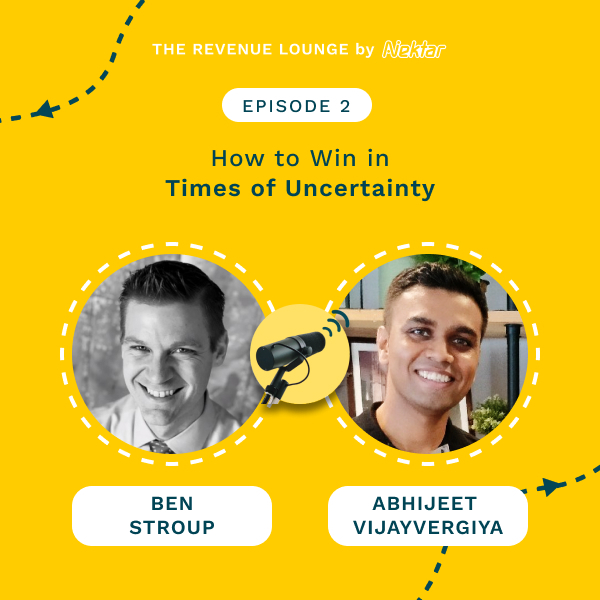
Ep #2: How to Win in Times of Uncertainty
Listen Now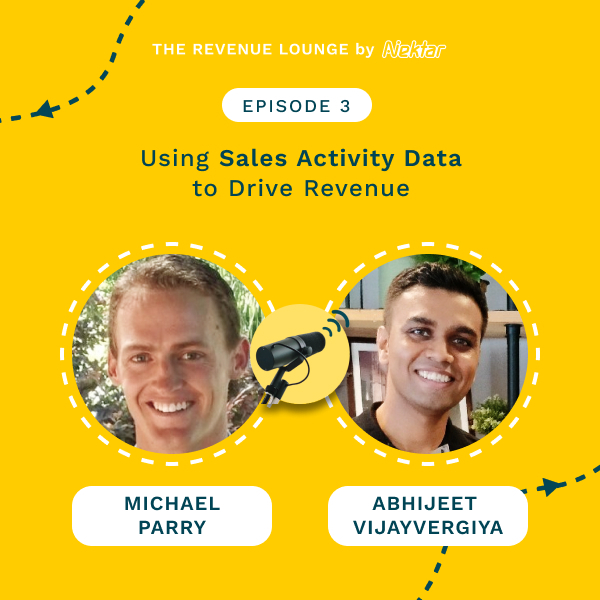
Ep #3: Using Activity Data to Drive Sales Productivity
Listen Now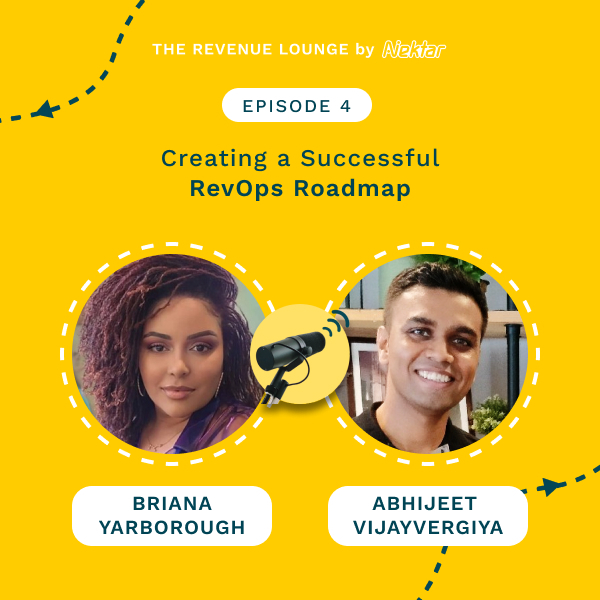
Ep #4: Creating a Successful RevOps Roadmap
Listen Now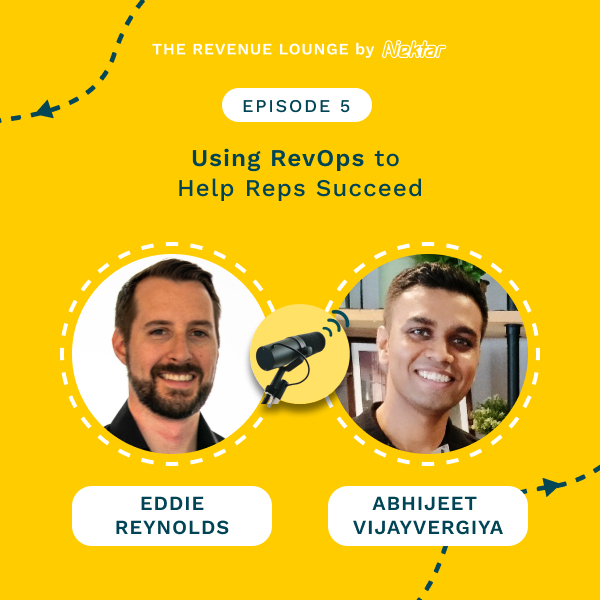
Ep #5: Using RevOps to Help Reps Succeed
Listen Now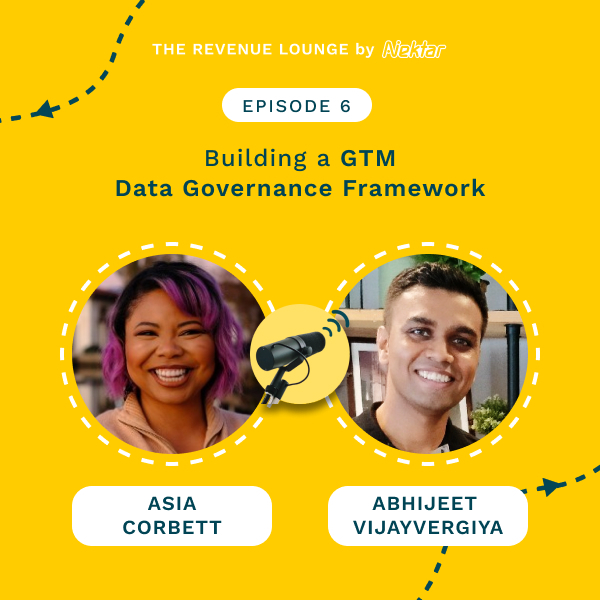
Ep #6: Building a GTM Data Governance Framework
Listen Now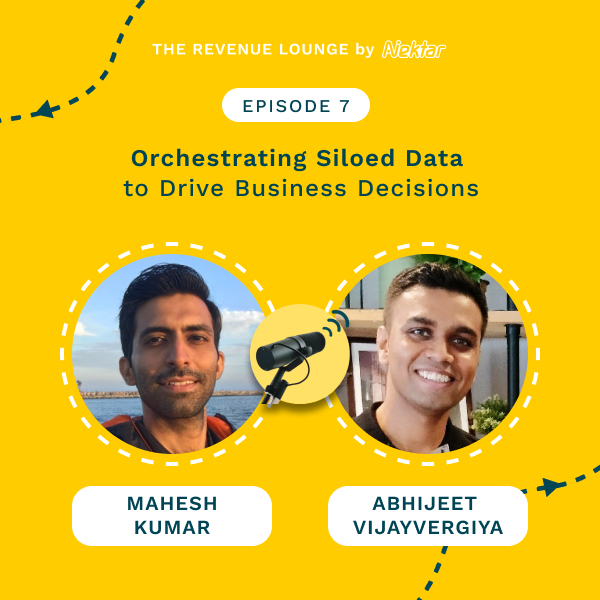
Ep #7: Orchestrating Siloed Data to Drive Business Decisions
Listen Now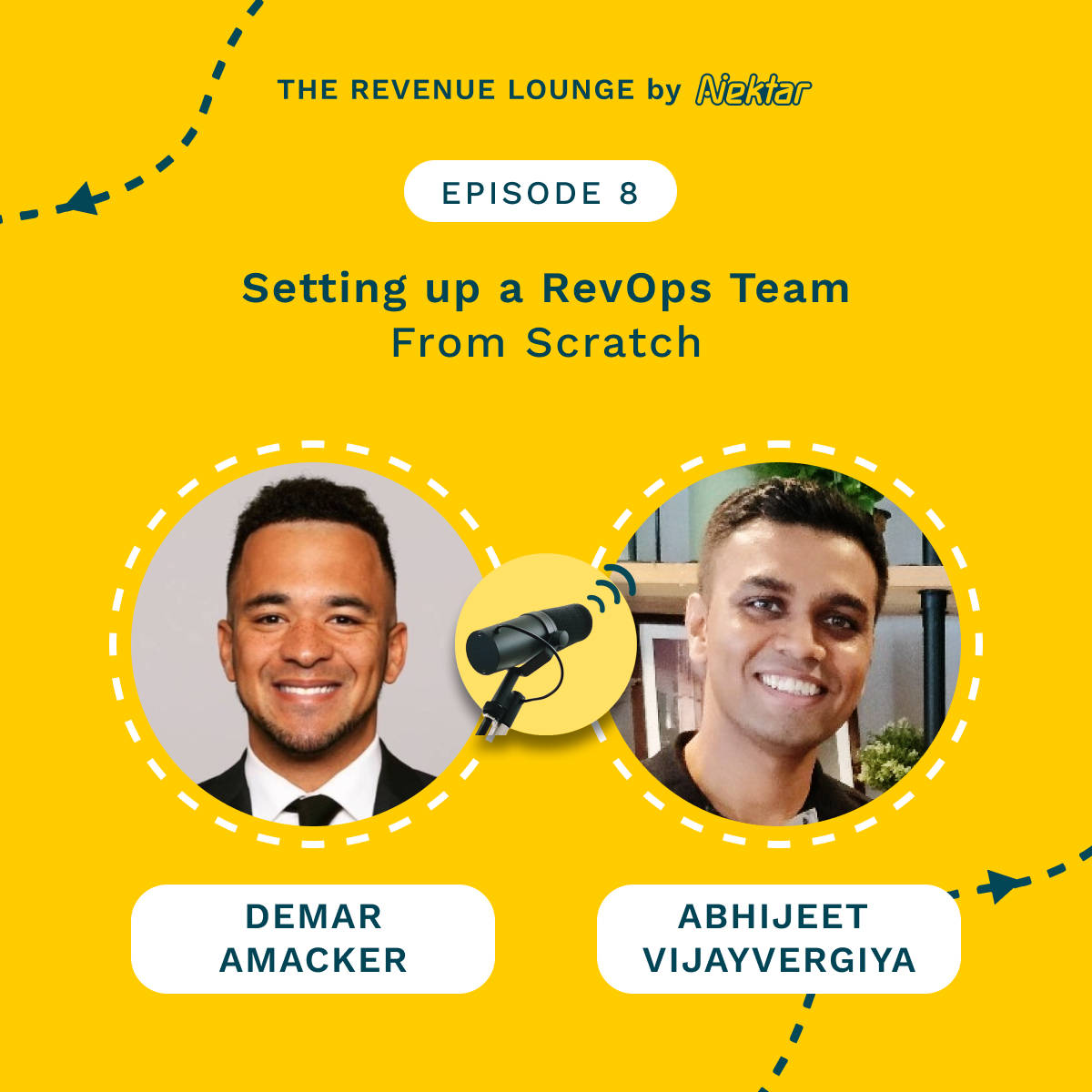
Ep #8: Setting Up a RevOps Team From Scratch
Listen Now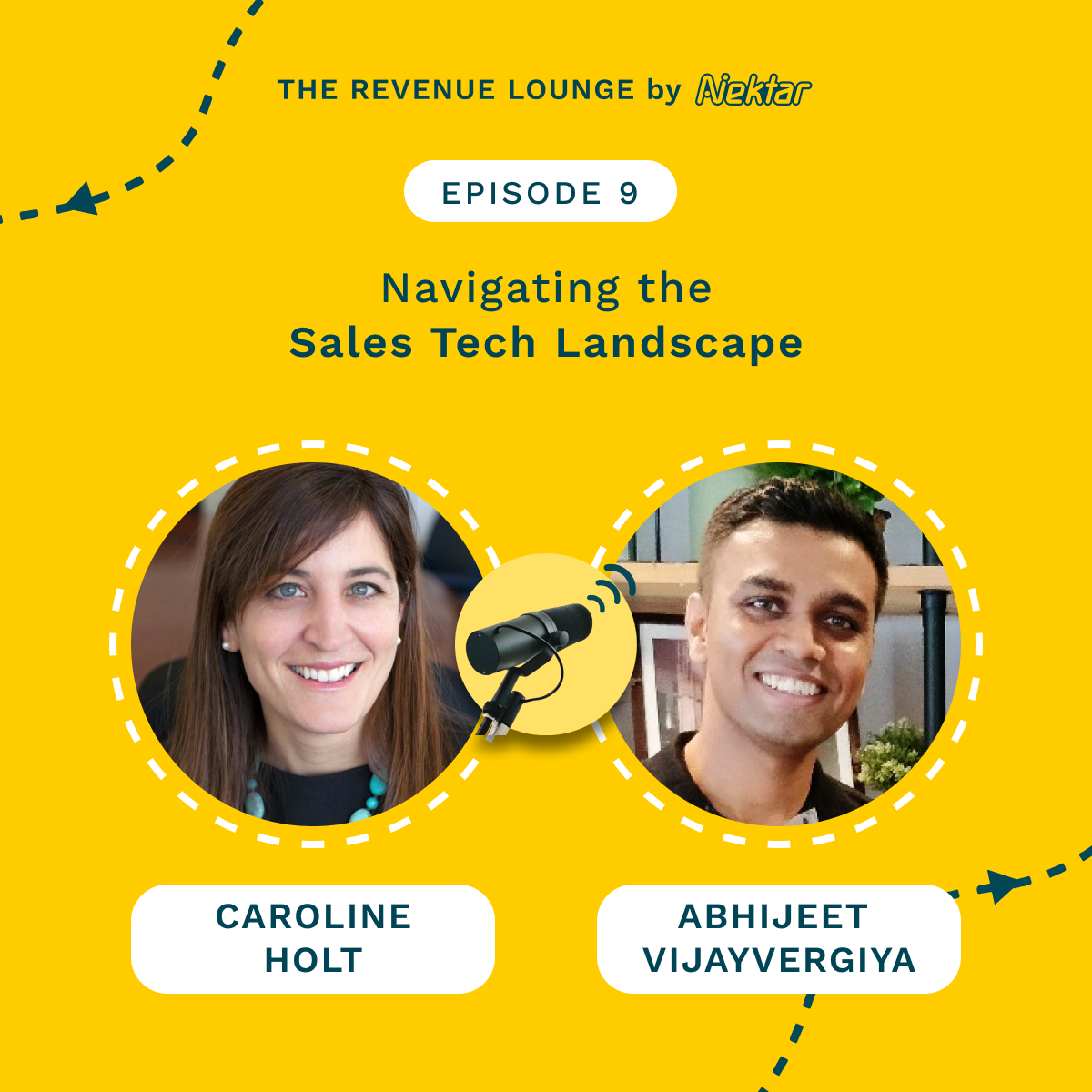
Ep #9: Navigating the Sales Tech Landscape
Listen Now